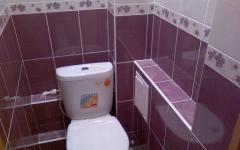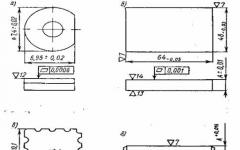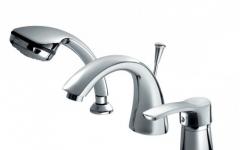Invention of the microwave happened by chance when an American engineer noticed that microwaves could be used to heat food. Microwaves were produced back in Soviet times on the basis of Japanese magnetrons, and now the production of these kitchen appliances has reached its zenith. Now they are controlled using a smartphone and cook even if you are not at home. The user’s only task is to remember to put food inside before leaving and choose the right one for it. dishes . Not all kitchen utensils are suitable for microwaves. Therefore, dishes for the microwave, how to choose, photos, all this will be discussed in our article.
How to choose dishes for the microwave
Household appliances use microwaves with a frequency of 2450 MHz. This indicator was not set by chance, but by international agreement in order not to interfere with the operation of radars and satellites. What kind of dishes are used for the microwave? First, let's define a list of utensils that are not suitable for use in a microwave oven.
Dishes that are not suitable for the microwave oven

Microwave-safe cookware
Dishes for the microwave: how to choose, which is better, safer? These questions are asked by many users who have just acquired equipment or want to protect their family members. Below is a list of utensils that can be used in any microwave without fear.
- Heat resistant glass . It is a hardened fireproof material that is also suitable for a conventional microwave. The walls of such kitchen utensils are quite thick, so they practically do not heat up. Thin, fragile glass is not suitable for use in microwaves, as it risks breaking when interacting with hot food.

- Porcelain . Almost any type of porcelain can be used in the microwave, with the exception of dishes with “gilding”.
- Ceramics , covered with glaze. If the surface of the kitchen utensil is chipped or cracked, do not risk using it. If the dishes are covered with glaze, it is recommended not only for heating, but also for cooking. For example, cooking scrambled eggs will turn out no worse than in a frying pan, and without a drop of oil. The only negative is that it gets very hot and you can get burned, so you will have to use an oven mitt.
- Glass ceramics. A fairly common material that combines the stability of glass and the beauty of ceramics, in tandem providing the best performance properties. Suitable for reheating and cooking.
- Paper products. They are suitable for short-term use in the microwave (for heating). Ready-made meals from the supermarket can be reheated in the microwave.

- Cotton/paper napkins. Flour products are often wrapped in them for heating. Cupcakes wrapped in a napkin will not be dry while heating.
- Plastic containers. They are available in a wide range, which is why consumers love them so much. The variety of shapes and sizes is not the only advantage; plastic containers are used not only for heating, but also for freezing and storing food. No other material allows such treatment. But plastic is only good for heating. It is impossible to cook dishes in such dishes, especially those containing fat or sugar (heated to high temperatures).

- Heat-resistant film. A special film is produced that does not deteriorate or melt when exposed to microwaves. It creates a sauna effect for a heated dish and enhances the effect, keeping food hot for a long time.
- Silicone forms. Products made from polymer materials are suitable for use in the microwave. Cupcakes, cakes and muffins are the main dishes that are prepared using silicone molds.

Microwave dish shape
Not only does the material play a role, the shape is also important for uniform and correct cooking of dishes. A suitable shape is an oval or cylinder; in such dishes, food is cooked evenly on all sides. Despite the popular square and rectangular shapes, food in them is not cooked in the best way, drying out in the corners.
For speed and uniformity of cooking, it is recommended to give preference to dishes with low walls, but with a wide bottom.
A microwave is not just a kitchen appliance for bachelors; it can do much more than just heat up food. And given the variety of modern models, you can count on an exhaustive list of tasks. The combination of a microwave and the right dishes will allow you to forget about other kitchen appliances. Different foods require different utensils:
- dishes that expand upward: pasta, cereals. When heating soup in the microwave, the bubbles concentrate at the bottom of the container and can come out at any time, so the plate must have a margin of height for the walls.
- cylindrical shape: muffins and cakes require an oblong shape with high sides, as they “fit” during cooking.
- dishes with sides of medium height: vegetables, fruits. During heat treatment, vegetables and fruits do not increase in size, but, on the contrary, decrease, releasing juice, which partially evaporates.
Do you need a lid?
Most microwave kitchen appliances are sold without a lid, especially large containers for baking and meat dishes. Small containers or clay products are equipped with lids. When planning to use the microwave as your main kitchen assistant, we recommend getting a lid that prevents food from drying out. As a result, the taste of the dishes is tender and aromatic.
A lid will be needed for liquid dishes so that some of them do not evaporate during cooking. When cooking meat, you definitely need a lid if you don’t want to splash the walls of your household appliances. As a last resort, use a plate or heat-resistant film for the microwave. ![]()
Utensils specifically designed for use in the microwave
The container, which is designed specifically for this type of kitchen appliances, has special markings on the packaging; it is suitable for operation in wave, convection and grill modes.
The optimal material is white glass, which can withstand temperatures from -40 to +300 degrees. Along with white, transparent heat-resistant glass (less expensive) is used. Glass ceramics, which can withstand temperatures up to +900 degrees, are considered a good option for long-term cooking. No less popular is heat-resistant plastic for preparing and storing dishes in the refrigerator/freezer; you can even eat from such containers. 
So that the cooking process is successful and effective. Pay attention to the following tips:
— Size of dishes: the smaller the better. Use a container that is the right size, otherwise the cooking process will be delayed. The smaller the shape, the faster the food will cook.
— Uniformity of cooking depends on the shape. Give preference to round or oval containers.
— Use the lid as needed. To prepare a dish, a lid is required (it preserves the juice of the food and does not dry it out). To defrost, the container must be open.
— Use a tall container for baking. As a result of cooking, any flour products based on yeast, kefir, sour milk, soda “fit”, increasing in size.
— When preparing soup, use a lid with holes to drain condensation.
— It is not recommended to cover scrambled eggs with a lid; you need to pierce the eggs in advance so that they do not explode at the wrong moment and stain the inside of the equipment. By the way, cooking scrambled eggs in the microwave takes a minimum of time (1-2 minutes).
- Size. It is important that the walls of the container do not touch the walls of the microwave oven.
— For ideal heating, arrange food correctly. The center of the dish tends to be the worst cooked, so the edges can end up dry and the center undercooked. If possible, it is recommended to move the food closer to the edges of the dish.
ADVICE! How to check if a dish is microwave safe? Take a glass of water at room temperature. Place it in a bowl and turn on the equipment for 60 seconds at maximum power. Then check: the water should heat up, but the dishes should not. If the container is very hot, it is not suitable for use in the microwave.
In the microwave they prepare a tender omelet, a fluffy cupcake, dry fruits, and bring stale bread, crackers, and chips back to life. But it is recommended to cook only in special dishes for this household appliance, in order to protect not only it from possible breakdowns, but also to protect yourself and your health.









